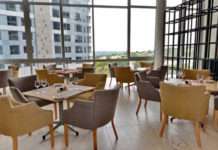For better or worse, South Africa is located away from the major centers of politics, economy, and culture. Being an important advantage for cultural tourism, our remote location also results in lack of credible information on how we live today.
Meanwhile, fake news about South Africa thrive in foreign media. The percent of fabricated data on the web is so high that Facebook launched fake-news detector to prevent the further spread of fake news in a collab with Africa Check.
In support of that initiative, we would like to highlight the true facts about South Africa and reveal specificities that are really inherent to the country. Well, South Africa lives and breathes…
1. Fruits
65% of South African territory is covered by savanna. Moreover, some regions like Cape Town have suffered from water shortage since 2015. But despite the seeming deficiency of fertile land and deepening water challenge, South Africa is ranked 8th among the leading fruit exporters in the world.
According to TradeProbe report on the agricultural industry, South Africa had $2.8B of export value in 2016. The growth rate comprised 95.1% as of the 2007-2016 period, what’s especially great compared to 89.5% of the USA growth rate, 38.9% of Spain, and 82.3% of Chile. Fruits contribute over 40% of earnings to agricultural export and create around 400,000 workplaces for South African people.

Funny enough, some unfortunate authors have managed to get the word out that South Africa is the 2nd biggest producer of fruits. This only confirms that unfounded news and rumors are the real headache for the South African community.
2. National Lottery
82% of South Africans buy a lottery ticket once a week. This means that our citizen love National Lottery much more than other nations. Comparing to 50% of British that participate in lotto at least one time a month, 49% of Americans that buy a 1+ ticket per year, and 44.8% of Australians that try their luck once in 12 months, that’s an impressive percentage.
The reason for that is apparent: lottery is more preferred than regular gambling due to the quite recent emergence of the physical casinos in South Africa. All forms of gambling except for horse betting were off-limits to South African until 1996, while the ban on online gambling remains valid to date.
Still, many online casinos keep their “doors” open for players from South Africa. They actively advertise their services with online banners, video ads, and bonuses. The latter are the most sophisticated methods of casino promotion, especially those bonuses that are available without a deposit.
Just imagine: you visit an online casino and see an attractive offer like “Get $40 after registration and play games online”. Even if you are far from casino games, or you come from a country where online gambling is not legal, you got half a mind to try them for free when you see such a promotion.
3. Inequality
The Independent states that South Africa is the most unequal country in the world engulfed in severe poverty, referring to the data provided by World Bank. Is that indeed the case?
Unfortunately, this claim is not an exaggeration. Looking at the Gini coefficient that is used to measure income inequality inside a country, we confirm that South Africa can “boast” of the most unequal wealth distribution among nation’s residents.

The World Bank’s estimate of South African Gini coefficient is 63% as of 2014. Global Finance reports that it dropped to the lower level of 57.7%, but still ensures the first position to SA in 2018.
The Gini coefficient represents a scale from 0 to 100%, where 0% is perfect equality and 100% is maximum inequality, so at first glance those numbers don’t seem to be that bad. But in reality, the highest registered Gini coefficient is somewhere in-between 60% and 70%, what makes South Africa one of notorious record-holders along with Lesotho, Micronesia, Haiti, and Botswana.
4. Platinum
Sombre facts about South Africa are over, let’s proceed to the things in which we are the best. One of them is the production of platinum.

As you can see from the table above, South Africa produces around 70% of all platinum in the world. There are over 80 platinum mining projects in our country that increased the production of this rare metal from 163 tons in 2010 to almost 200 tons in 2017.
However, some recent changes raised concerns about the industry’s prosperous future. The biggest consumer of SA platinum is the automotive industry where platinum is used for diesel engine manufacturing. The demand on diesel-driven cars is expected to decrease in a few decades, as the world might switch to more ecological electric vehicles. Such a case may cause serious losses in the South African platinum sector.
5. Clean Air
Speaking of ecology, we also have something to be proud of. “South Africans live and breathe clean air, although not all of them”— this is what World Health Organization would say about the main question raised in this article. According to the map that illustrate the level of air pollution worldwide, South-Western part of our country offers the most favorable conditions for living.

Red areas on the map enclosed above represent heavily-polluted locations, while the green ones indicate locations with relatively high air quality. Yellow areas are locations with mediocre air cleanliness values.
Thus, the most polluted regions on Earth are South Asia and the whole Africa except for Namibia, South Africa, and tiny parts of Madagascar and Botswana.

Still, if you take a closer look at a close-up screenshot of this map, it will display some problem zones near Cape Town, Durban, and especially in Johannesburg/Pretoria region. This means that the largest SA city with the cleanest air is likely Port Elizabeth.
All in all, South Africa is not in that decay as it’s often depicted in the foreign news. We perform pretty well in some agricultural and industrial sectors, as well as are the least polluting country on the African continent. The major South African challenge is inequality, and much is still needed to be done to eliminate this issue completely and swell the ranks of thriving countries around the globe.












